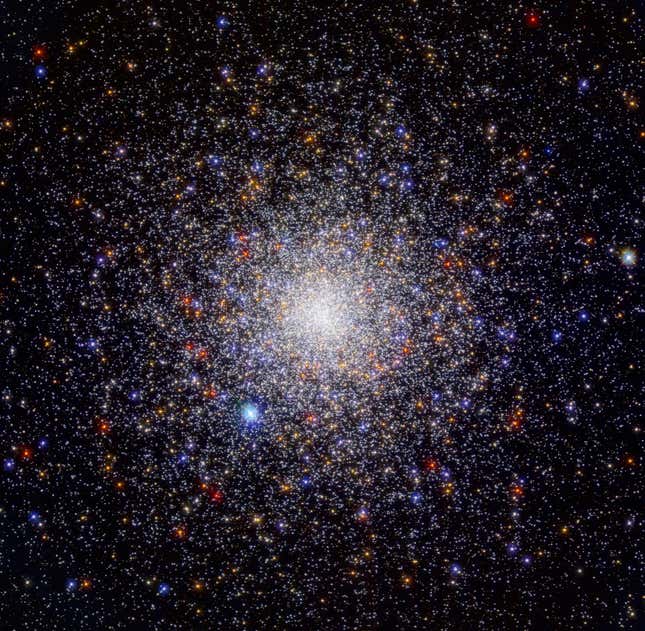ARTICLE AD
A team of scientists found a compact object 40,000 light-years from Earth that is either a very massive neutron star or an itsy-bitsy black hole, but they’re not sure which.
Remake this Sci-Fi Film with Peter Capaldi!
The so-called mass gap object has a mass between 2.09 and 2.71 times that of our Sun. For a neutron star—the collapsed, superdense core of a star—that would be huge, perhaps even the largest yet known. But for a black hole—an even more compact object, so dense that not even light can escape it—it would be among the smallest of its kind; black holes can be millions if not billions of times the mass of our Sun. The team’s research exploring the neither-here-nor-there object is published today in Science.
“If a neutron star, it is probably the heaviest one known to date, with lessons for the uncertain physics of extremely dense nuclear matter,” said Maya Fishback, an astrophysicist at the University of Toronto who was not affiliated with the recent paper, in an associated Perspective article. “If a black hole, it may be the lightest known, which could affect the understanding of supernova explosions or dynamical interactions such as neutron star mergers inside globular clusters.”
Both neutron stars and black holes are venues for some of the universe’s most extreme physics. From their inner workings to the spacetime-warping collisions between them, better understanding their genesis and interactions will help astrophysicists decipher everything from quantum mechanics to the evolution of galaxies. Their baffling natures likely hold answers to some of the most fundamental questions about the universe.
The object sits in Caldwell 73 (NGC 1851), a globular cluster that may have formed from two clusters that coalesced in a dwarf galaxy. It is half of a binary system, the other half being a pulsar, a rapidly rotating neutron star whose flashes of light astrophysicists can use to measure things like the rippling of spacetime itself. The two objects are 4.97 million miles (8 million kilometers) apart.

The team observed the binary with the MeerKAT radio telescope in South Africa. They calculated the total binary mass—3.887 solar masses, give or take .004, as well as the mass of the companion object, the higher estimate of which is 2.71 solar masses. (In 2019, a different team described a hefty neutron star with a mass 2.14 times that of the Sun; the newly described object blows that one out of the cosmic water.)
“In addition to the unusual companion mass of pulsar PSR J0514−4002E, the binary system’s total mass of 3.887 solar masses is remarkable,” Fishback added. “It is heavier than any known binary neutron star system.”
The research team believes the unique object—again, either one of the heaviest neutron stars or possibly the lightest-known black hole—formed in a merger between two neutron stars, regardless of its true nature.
Though the team could not ultimately determine this unusual object’s identity, follow-up observations of similar compact objects in the same mass range may offer some clarity about the conditions in which neutron stars and black holes form and grow.

 1 year ago
100
1 year ago
100 

